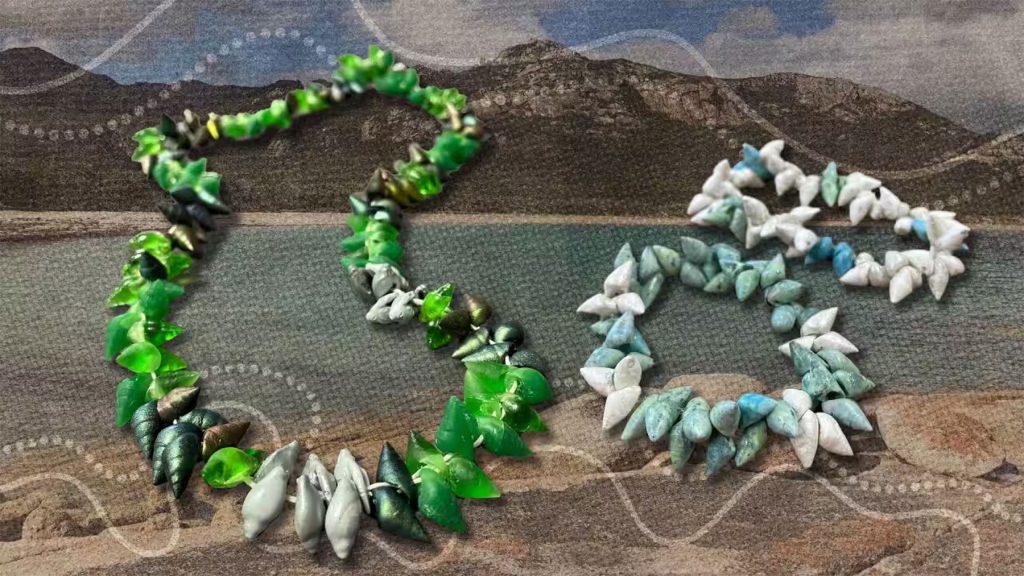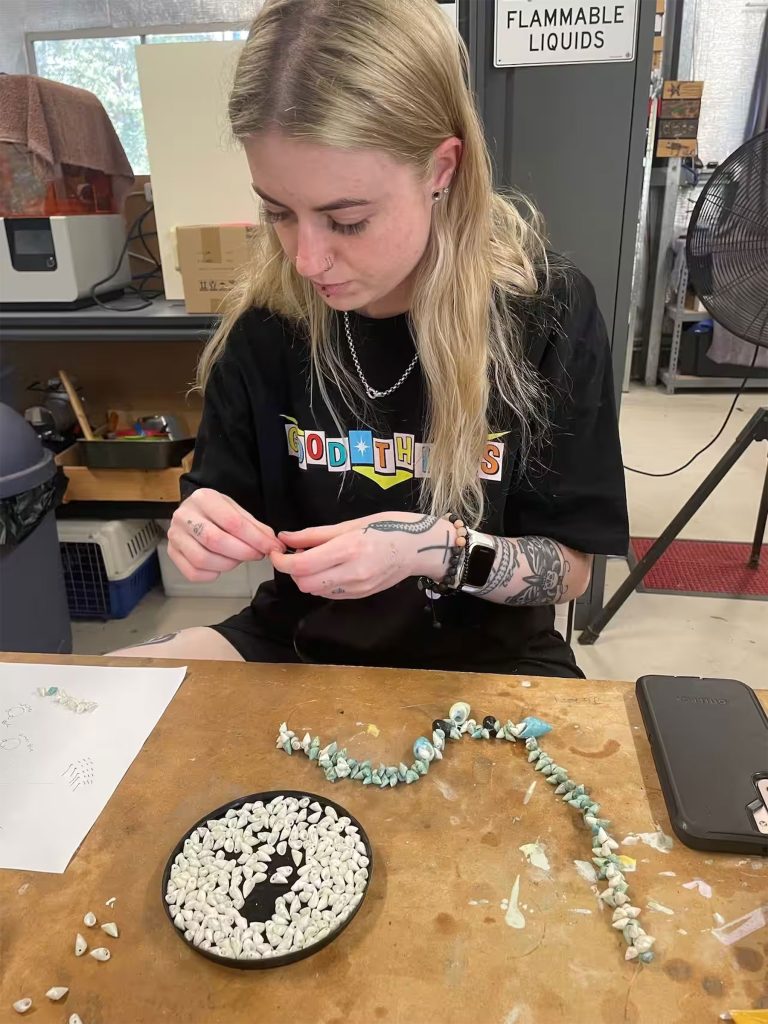Andrew Gall, pakana man and artist from lutruwita (Tasmania) has channelled his expertise of art and technology into preserving sacred jewellery practice, kanalaritja. Kanalaritja is the making of shell necklaces, a practice that has been passed down through generations of pakana women – and its future is in the hands of 3D printing.

1/3 Andrew Gall’s doctoral exhibition ‘Protecting kanalaritja’ on his pakana Country
The effects of global warming have been threatening the long-standing practice of kanalaritja. Changes in sea growth and water temperature is affecting the spawning and survival of maireener shells, which are used for kanalaritja. Andrew’s research found that the continuation of global warming will lead the sea shells to become thin and brittle from the water’s acidity and therefore, unusable in the practice.

2/3 Kanalaritja
With permission and a set of pakana shells gifted by the community, Andrew was able to use 3D scanning, drawing and printing technology to recreate shells. Mr Gall admits that the 3D shells are not a replacement and yet to be precisely where he would like them to be, “We’re not at 100 per cent. There’s new technology that would make it unbelievable, but it’s not accessible in Australia… we’re about 85 per cent. The process is there now, but we’re not quite there with the accuracy and the colour,” he says.

3/3 Zyana Gall, Andrew’s granddaughter, stringing kanalaritja together
Due to the female-led nature of kanalaritja, Mr Gall worked closely with his daughter, Alana who also met with senior shell-stringers before commencing this project. “Kanalaritja is such an important and sacred practice, especially because of the connection that it brings between pakana women,” she says.
Understandably, some elders were hesitant with the introduction of 3D technology as the best solution for kanalaritja should be fixing the environment first. However, some were also happy that Andrew “was working towards protecting kanalaritja if things didn’t drastically change in the environment,” Mr Gall says.
Further reading: